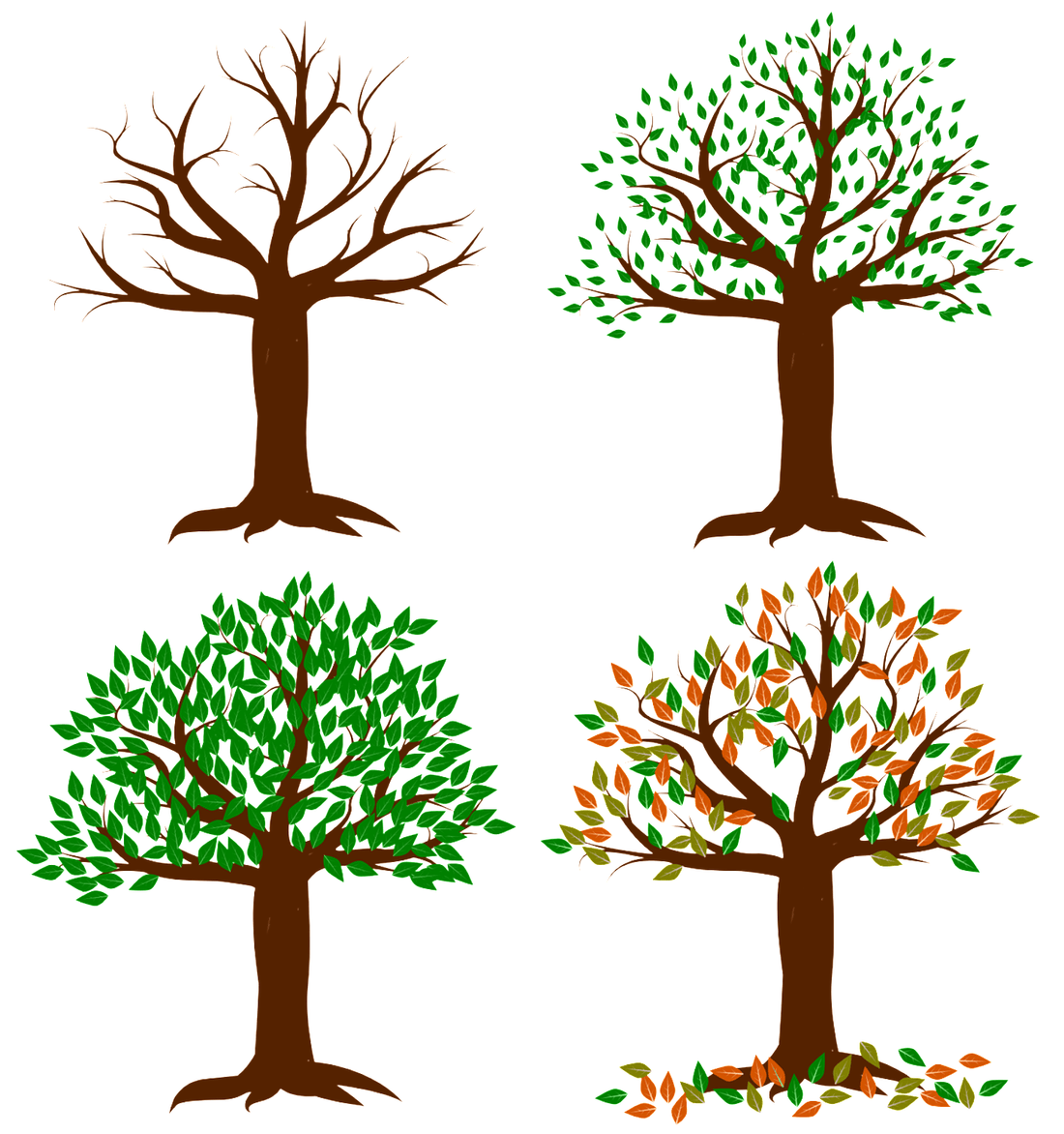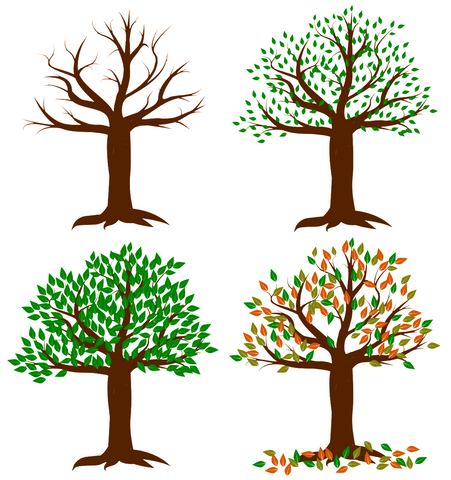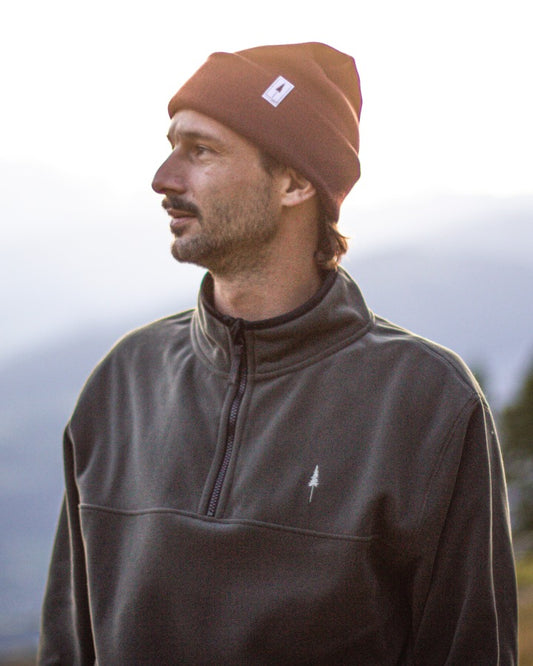A refreshing swim in summer, colourful walks in the woods in autumn, a warming fire in the fireplace under snow-covered roofs in winter and in spring nature awakens again and the cycle starts all over again - what could be better? Our seasons at a glance.
A refreshing swim in summer, colourful walks in the woods in autumn, a warming fire in the fireplace under snow-covered roofs in winter and in spring nature awakens again and the cycle begins anew - what could be better? Our seasons at a glance.
The seasons are familiar to us - we accept as quite "natural" that there is spring, summer, autumn and winter. But are there really "only" four seasons? Or perhaps a few more? And what makes the seasons change so reliably - at least until now?
How are seasons created?
To understand why weather and solar radiation change so noticeably throughout the year, you have to go a long way. On a cosmic level, so to speak. Because astronomical factors are involved in the formation of the seasons.
Sure, it stands to reason to assume that the Earth's orbit around the Sun has something to do with the seasons. Anyone who has seen a model of the solar system at some point probably knows that all the planets do not orbit the sun in circular orbits, but in elliptical - i.e. rather oval - orbits. So does it get colder when the Earth next moves away from the Sun?
No - just not. The seasons are due to the fact that the Earth's axis is tilted by about 23° from the vertical. With each revolution around its own axis in relation to the revolution around the sun, the earth "circles". And this so-called precession of the Earth's axis is responsible for the fact that there are seasons... because if the Earth's axis were at a right angle to its orbit, we would always have the same climate, worldwide.
Four alternating seasons
Since the earth now rotates a little, it sometimes turns the northern and sometimes the southern hemisphere closer to the sun. This ensures that there are different seasons. We are used to following the astronomical dates for the beginning of the seasons:
- Spring: It begins on 21 March, usually also the date of the equinox, even if it still seems cool to cold. Now nature gets ready for take-off and prepares plants and animals to resume their growth and reproduction cycles. All functions that were shut down during the winter are reactivated. This is helped by the increased incidence of sunlight, which not only wakes animals from hibernation, but also makes us humans much more alert.
- Summer: 21 June is officially the start of the warm season and also the longest day of the year. The blossoms that burst open in spring now bear fruit that ripens thanks to the long, warm days. Animal children born in spring grow up in summer under the most favourable conditions imaginable. Humans are also much more productive in summer than in winter, because the longer exposure to sunlight is good for our health.
- Autumn: With the autumnal equinox on 23 September, the long summer evenings in the garden (usually) come to an end - it gets cooler, the days quickly become shorter, fog and rain determine the climate. Nature prepares for winter, but very slowly. Some plants are only now bringing their fruits to maturity, and in the animal world courtship begins. Young animals are now often weaned so that their mothers are now ready for a new pregnancy.
- Winter: With the winter solstice, i.e. on 21 December, we record the shortest day of the year and the official start of winter - even though from now on the days slowly become longer again. The cold and darkness seem hostile to life at first glance, but they are not. Winter is merely a necessary respite. Because soon it will be spring again...
Four seasons - really?
We in our latitudes consciously perceive four seasons, but in fact the year can be divided into much more and differentiated sections. Phenology, founded by the natural scientist Carl von Linné, distinguishes between ten seasons, because spring, summer and autumn are subdivided into preliminary, main and late phases.
The meteorological and astronomical beginning of the seasons are also usually not identical. While astronomers are guided by the length of the day, meteorologists use the calendar months for their division of the seasons. With such different views, all we can do is hold our hand out of the window to see how warm or cold it is outside!
Always a mild climate? There is!
If you want to escape the seasons - and especially winter - you can quickly identify places around the globe where not much changes in the course of a year. Whether Uruguay, the Côte d'Azur or Hawaii, they all lie in "temperate" latitudes. This is because the closer you get to the equator, the less the seasons affect you. The length of the day also varies less. That's why it's so easy to spend the winter on the Red Sea beach in Egypt or on Madeira. However, proximity to the equator does not always guarantee a pleasant climate, because in some parts of the world the monsoon rains make themselves felt seasonally. So it's not for the faint-hearted!
Those who want to experience the reverse of the seasons in an extreme way can do so in Scandinavia. Because the higher the latitude, the longer it stays dark in winter. Whether one prefers to stay in Europe and enjoy the different seasons, or whether individuals are drawn to distant countries and under the tropical sun, is of course a question of one's own preferences.
The right outfit for every season
No matter how cold and wet the winter gets or how hot the summer, we at NIKIN want to help our customers find a suitable outfit for every season. And we want to do this as sustainably as possible. One of our concerns is the preservation of forests - all over the world. Forests play an enormously important role for our climate and the preservation of the planet. That's why we want our blogs to provide food for thought - also on interesting aspects of nature, in this case the seasons.





















